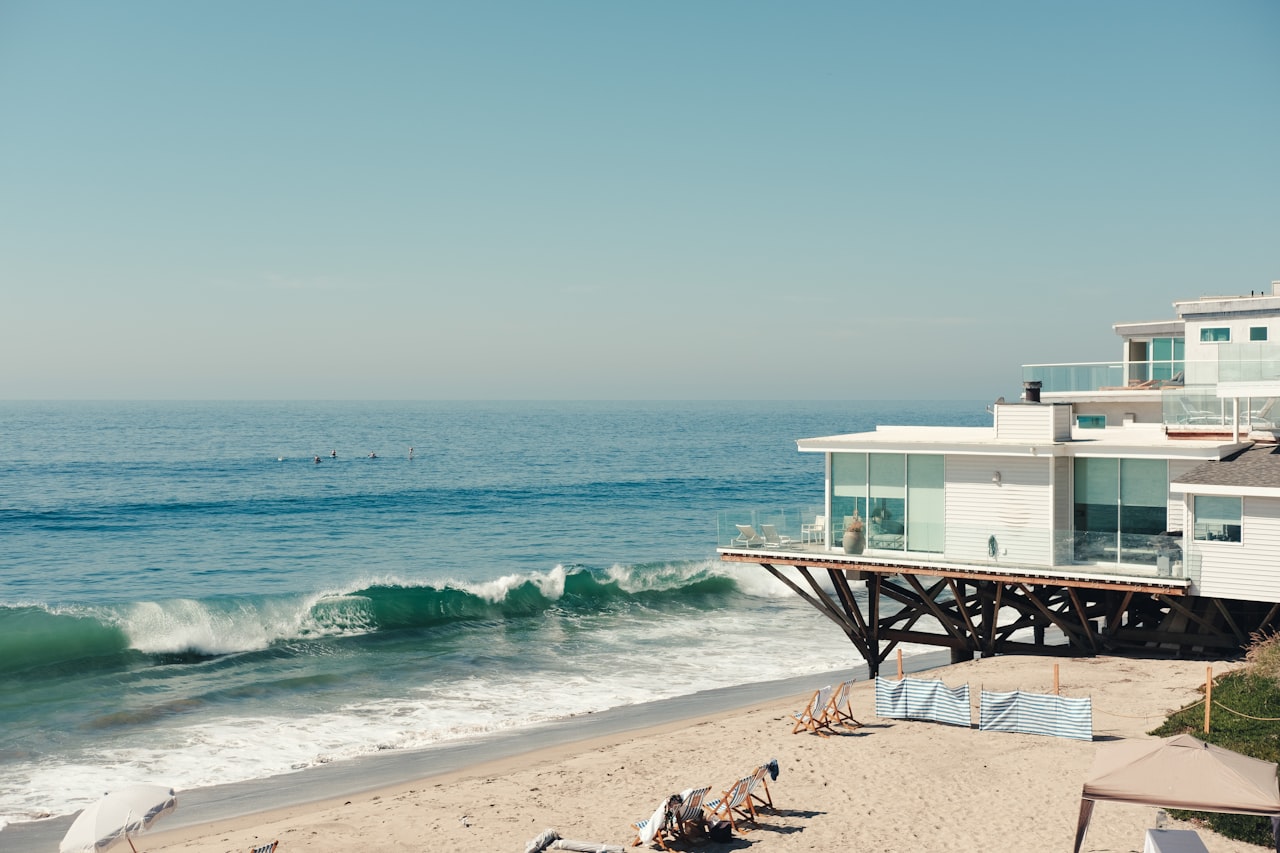West Hollywood, often called "The Creative City," is a vibrant and culturally rich area near Beverly Hills and Los Angeles. It has earned its reputation as a fashion, arts, and innovative design hub. As you explore the West Hollywood Design District's streets, you'll discover many galleries and notable establishments, such as the Pacific Design Center on Melrose Avenue and interior design showrooms along Beverly Boulevard. One of the district's highlights is the opportunity to shop at leading boutiques, where you might spot some celebrities or stars.
While West Hollywood is known for its glamorous side, hidden gems showcase its cultural and architectural significance. The Schindler House at the MAK Center for Art and Architecture is an icon of modern architecture. Located on a quiet side street, this stylish house was completed in 1922 and exemplifies California's indoor-outdoor style architecture. The style of homes and notable businesses in West Hollywood are closely tied to the evolution and history of the city. Before the turn of the 20th century, Hollywood was a quiet community with farmhouses and orange groves, but that quickly changed as notable architects emerged and homes were built.
Here is a look at the most notable West Hollywood architecture and insight into the area’s best architects.
Spanish and Spanish Revival
The Spanish Colonial Revival style of architecture became popular in Southern California during the 1920s and 1930s, coinciding with the boom of Hollywood and the increased demand for stylish homes. This home style features earthy details, stucco exteriors, and red-tiled roofs, reminiscent of the architectural elements seen in Spanish colonial structures from the 16th century. Arches are a prominent motif, often seen as decorative edging around windows, framing entranceways, or creating elegant porticos.
The homes typically have wooden doors, window shutters, and decorative wrought iron details, adding to their rustic charm. Courtyards and garden spaces are integral to the design, often with a central theme, blurring the boundaries between interior and exterior areas. The floor plans of these homes can be spacious and feature tiled floors that continue the theme indoors, and rooms often flow together, creating a seamless experience. Split-level designs help define different areas within the home. Sliding doors that open onto shady gardens with lush palm trees are a natural fit for Spanish Colonial gardens, adding to the overall appeal of the architecture.
Original homes in the Spanish Colonial Revival style are highly sought after, but modern variants continue to be built, incorporating the cool and charming qualities that define this architectural style. This style is notable in famous buildings like Andalusia Historic West Hollywood and the Villa Primavera.
Mediterranean
This style emerged in the 1920s and 1930s and continues to be popular today, particularly in regions like Florida and, of course, Southern California, where the climate suits its design principles.
Mediterranean Revival homes draw inspiration from various architectural influences, including Andalusian, Beaux-Arts, Italian Renaissance, and Spanish Colonial. These homes are known for their comfort and often feature interior courtyards and landscaped gardens, which integrate seamlessly with the living spaces.
The exteriors of Mediterranean Revival homes typically have stucco finishes, often painted in bright and earthy tones. Flat roofs help to reflect the excessive summer heat, and roof terraces and balconies may be present. There is a strong emphasis on integrating exterior and interior spaces, allowing for a seamless transition between the two. Other standard features include shady terraces and decorative arches leading to grand porches with heavy wooden doors, adding to the architectural charm. Windows are typically tall, and shutters on either side contribute to the aesthetic. In cases where the roofs are sloped, the angle is usually shallow.
Water features are frequently incorporated into the design, reflecting the Andalusian influence. Repeating arched detailing on eaves and porches adds to these homes' visual appeal and architectural elegance. Mediterranean Revival homes are highly sought after for their timeless elegance, comfort, and ability to create a harmonious connection between indoor and outdoor spaces. This style is notable in famous buildings like Casa Real.
French Revival
The French Revival style of architecture gained popularity between 1915 and 1945, primarily influenced by soldiers returning home from the World Wars, and encompasses several sub-styles.
Norman Cottage homes draw inspiration from the provincial houses of Normandy. They typically have steep-hipped roofs with side-facing gables and narrow eaves. The floor plan of these homes is L-shaped, positioning the front door at the junction of the two wings. Exteriors are typically finished with stucco, stone, or brick. Details like louvered shutters, delicate wrought iron details, and stonework surround add to the rustic charm of this style.
Chateauesque homes are grander and more formal, taking inspiration from French medieval castle designs, with square turrets and conical roofs. Other notable features include porthole windows and decorative door surrounds.
French Eclectic is a more flexible style that blends aspects of different architectural styles, such as Craftsman or Cottage, while retaining some elements of French provincial homes. These homes often feature brick chimneys and steeply raked grey-tiled roofs, maintaining the French-inspired aesthetic.
French Revival homes were favored for their elegance, charm, and varied architectural details. The different sub-styles allowed homeowners to choose the formality and grandeur they desired while maintaining a French-inspired aesthetic. This style is notable in famous buildings like The Colonial House and the Four Gables House.
Modern
Modernism in architecture emerged in the 1920s with the work of influential architects such as Walter Gropius and Frank Lloyd Wright. It sought to blend sculptural form and functional design in innovative ways.
Modernist architects dared to use new materials like steel, poured concrete, and large glass panels, which allowed for practical construction and a visually striking aesthetic. The style emphasized open-plan interiors that were comfortable and functional. These homes often served as showcases for design collections and were considered works of art.
Despite being nearly a century old, modernist architecture influences and inspires contemporary design. Its focus on clean lines, functionality, and integration with the surrounding environment has stood the test of time, making it a significant and enduring architectural style. Notable buildings in West Hollywood include The Schindler House.
Are you interested in owning a piece of this elusive real estate?
If you are ready to own a piece of West Hollywood real estate or are interested in homes for sale in West Hollywood, you’ll want to work with a team of experts.
The Malibu Life is one of the largest brokerages in the country and is dedicated to ensuring a seamless journey.
Contact them today to get started!













